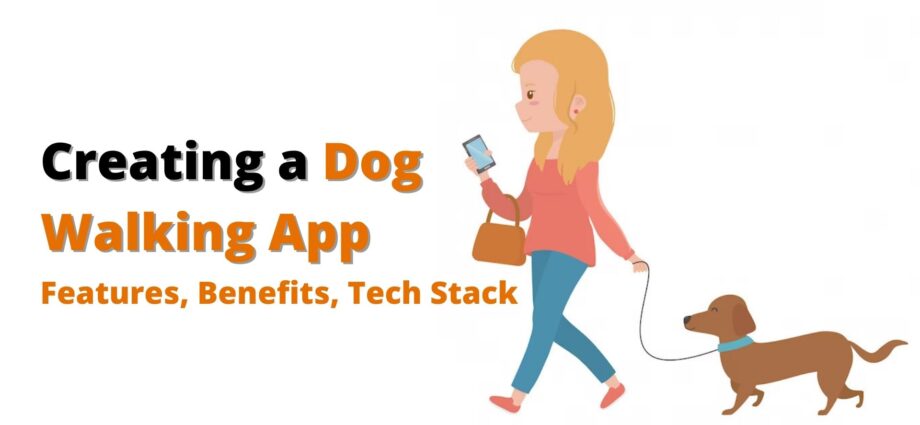Dog walking apps are here to give you some time off your little pet, enable you to focus on what you need to do, and simultaneously give a pep walk to your pet safely!
As the name suggests dog walking apps are mobile applications that you can access to hire a person who can take your dog out for a walk while you are at home, or away from home. Such platforms are trustworthy associations where pet sitters, dog walkers, or someone who is good at managing pets are available.
Possible Features of a Dog Walking App (In no particular order)
Here are some potential features that a dog-walking app might include:Dog walker user profile
Pet owners can view profiles of dog walkers and pet sitters, including their experience, certifications, and customer ratings. Users can browse through the profiles of different dog walkers in their area, read their reviews and ratings, and choose the one that best fits their needs.GPS tracking
Pet owners can track the location of their dogs and the dog walkers in real-time using GPS tracking. The app could include GPS tracking that shows the route of the walk, the duration, and the distance walked. This could give users peace of mind that their dog is being walked and is safe.Scheduling and booking
Pet owners can schedule and book dog walking or pet sitting services at their convenience. The app could offer a scheduling system that allows users to book dog walks in advance, choose the time and date, and receive confirmation of the booking.Payment processing
Most dog walking apps provide a secure payment processing system for pet owners to pay for the services. The app could handle payment and billing, so users don’t have to worry about carrying cash or dealing with payments directly.Photo and video updates
The dog walker could use the app to send updates to the owner, such as photos and videos of the dog during the walk.Customer support
Most dog walking apps provide customer support to help pet owners with any issues or concerns.Real-time notifications
Users could receive real-time notifications about the walk, including when it begins, how long it is expected to last, and when it ends.In-app messaging
Users and dog walkers could communicate directly through the app, making it easy to ask questions or provide additional information.Customization
Users could customize their experience by specifying their dog’s breed, size, and temperament, and by providing any special instructions or preferences.Additional Features
Emergency features
The app could include emergency features such as a panic button that allows the user to immediately call for help if something goes wrong during the walk.Integration with pet care providers
The app could integrate with other pet care providers, such as veterinarians or pet supply stores, to offer users a more comprehensive pet care experience. Popular dog-walking apps include Rover, Wag!, and PetBacker, among others. These apps have gained popularity due to their convenience, reliability, and user-friendly interfaces.Best Examples of Dog Walking Apps (General, unordered)
There are several dog walking applications available, and the “best” one for you may depend on your specific needs and location. Here are a few popular dog-walking apps:- Rover: Rover is one of the largest dog walking and pet care marketplaces, connecting dog owners with trusted dog walkers and sitters in their area. The app offers GPS tracking, real-time notifications, and 24/7 support.
- Wag!: Wag! is another popular app that connects dog owners with experienced dog walkers in their area. The app offers live GPS tracking, real-time updates, and a photo report after each walk.
- PetBacker: PetBacker is a global platform that connects pet owners with dog walkers, sitters, and other pet care providers in their area. The app offers real-time notifications, secure payment options, and 24/7 customer support.
- Tailster: Tailster is a UK-based dog walking app that connects pet owners with local dog walkers and pet sitters. The app offers GPS tracking, photo updates, and online payment options.
- Fetch!: Fetch! is a dog-walking app that serves the San Francisco Bay Area. The app offers GPS tracking, real-time updates, and a photo report after each walk.
- Swifto: Swifto is a dog-walking app that serves New York City. The app offers GPS tracking, real-time updates, and customized reports for each walk.
What technologies can be used to create dog care near – me app?
There are various technologies and programming languages that can be used to build a dog-walking app. Here are some commonly used ones:- Programming languages: For the server-side, popular choices include Node.js, Python, and Ruby on Rails. For the client side, JavaScript is commonly used along with HTML and CSS.
- Frameworks: Popular frameworks for building dog-walking apps include React, Angular, and Vue.js.
- Database: Popular databases include MongoDB, MySQL, and PostgreSQL.
- Cloud hosting services: Cloud hosting services like AWS or Google Cloud can provide scalable and reliable server infrastructure for the app.
- APIs: APIs like Google Maps or OpenWeatherMap can be used to incorporate features like real-time location tracking and weather forecasts.
- Payment gateway integration: For payment processing, you could use payment gateway APIs like Stripe, PayPal, or Braintree.
- Push notifications: Push notifications can be implemented using services like Firebase Cloud Messaging or Apple Push Notification Service.
- Mobile app development: For developing the mobile app versions of the dog walking app, you can use native app development technologies such as Java or Kotlin for Android, and Swift or Objective-C for iOS. Alternatively, you could use cross-platform frameworks like React Native or Flutter.

